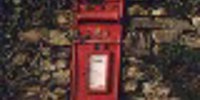Waitby Greenriggs
Waitby, Near Kirkby Stephen
Waitby Greenriggs, near Kirkby Stephen is a Cumbria Wildlife Trust reserve, supporting a rich floral diversity and many species of  butterflies.
butterflies.
Waitby Greenriggs is the only place in Cumbria where all three sub-species of fragrant orchid grow together. Bird's-eye primrose can be seen in May in wetter areas, but from mid to late June is when the majority of orchid species flower including northern marsh, fragrant, common spotted, fly, lesser butterfly and frog orchid. Globeflower, salad burnet, meadow cranesbill and oxeye daisy can also be seen in June.
July sees the appearance of the beautiful marsh helleborine and other flowers such as yellow rattle, meadowsweet, harebell and restharrow. Finally, in August, devil's-bit scabious, grass of Parnassus and the diminutive autumn gentian appear. These species all colonised the site following the building of the railway in the 19th century and indicate that the surrounding land was once much richer in wild plants than it is today.
Up to 20 species of butterfly can be seen on the nature reserve over the course of the summer. Rabbits and hares occur on the nature reserve and frogs breed in the old drains alongside the track. Tawny owls have bred and buzzards are frequently seen.
More information on Waitby Greenriggs can be found on the Cumbria Wildlife Trust website.
Waitby Greenriggs
Waitby Greenriggs, near Kirkby Stephen is a Cumbria Wildlife Trust reserve, supporting a rich floral diversity and many species of  butterflies.
butterflies.
Waitby Greenriggs is the only place in Cumbria where all three sub-species of fragrant orchid grow together. Bird's-eye primrose can be seen in May in wetter areas, but from mid to late June is when the majority of orchid species flower including northern marsh, fragrant, common spotted, fly, lesser butterfly and frog orchid. Globeflower, salad burnet, meadow cranesbill and oxeye daisy can also be seen in June.
July sees the appearance of the beautiful marsh helleborine and other flowers such as yellow rattle, meadowsweet, harebell and restharrow. Finally, in August, devil's-bit scabious, grass of Parnassus and the diminutive autumn gentian appear. These species all colonised the site following the building of the railway in the 19th century and indicate that the surrounding land was once much richer in wild plants than it is today.
Up to 20 species of butterfly can be seen on the nature reserve over the course of the summer. Rabbits and hares occur on the nature reserve and frogs breed in the old drains alongside the track. Tawny owls have bred and buzzards are frequently seen.
More information on Waitby Greenriggs can be found on the Cumbria Wildlife Trust website.
Miles: 10




